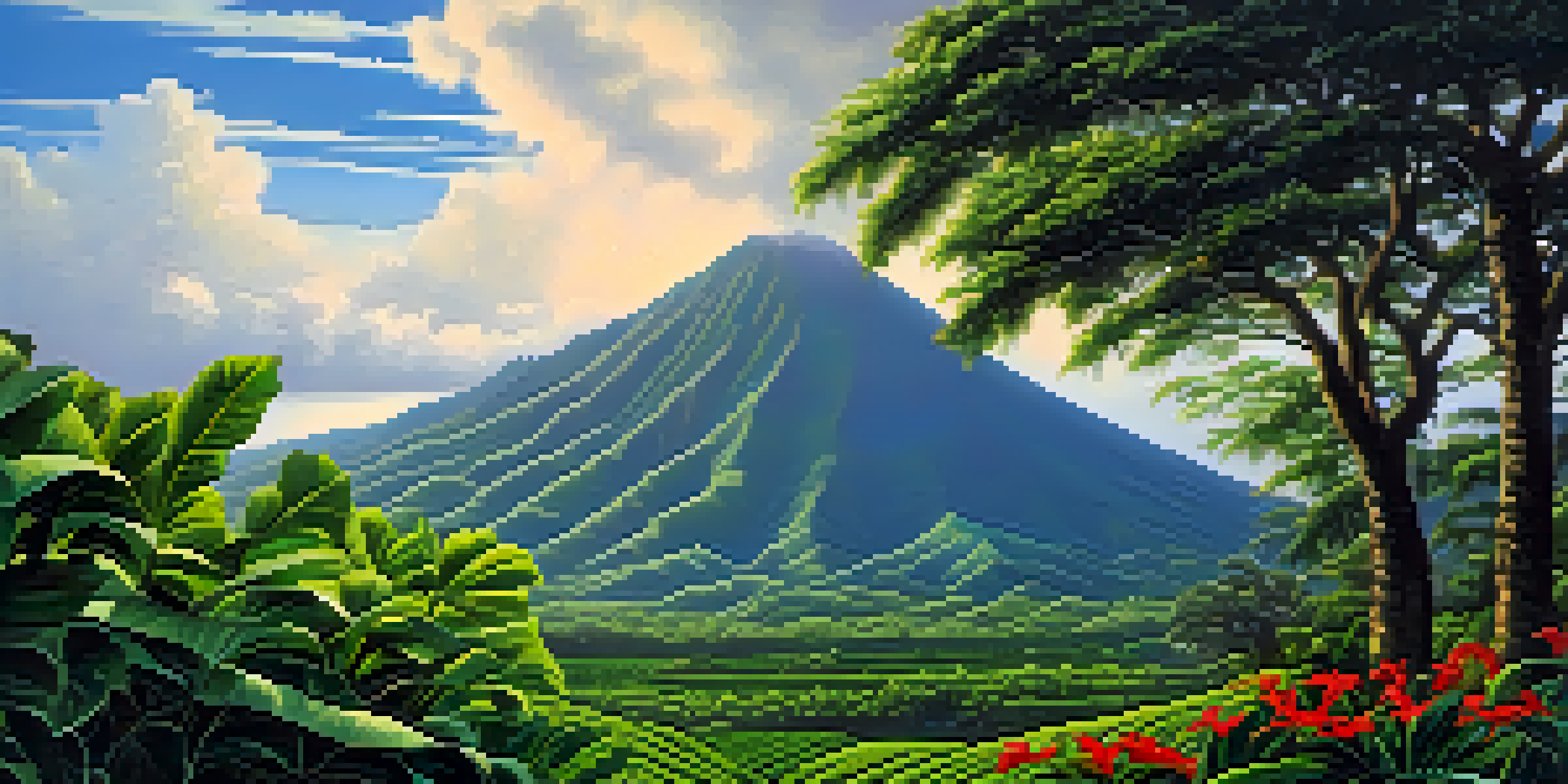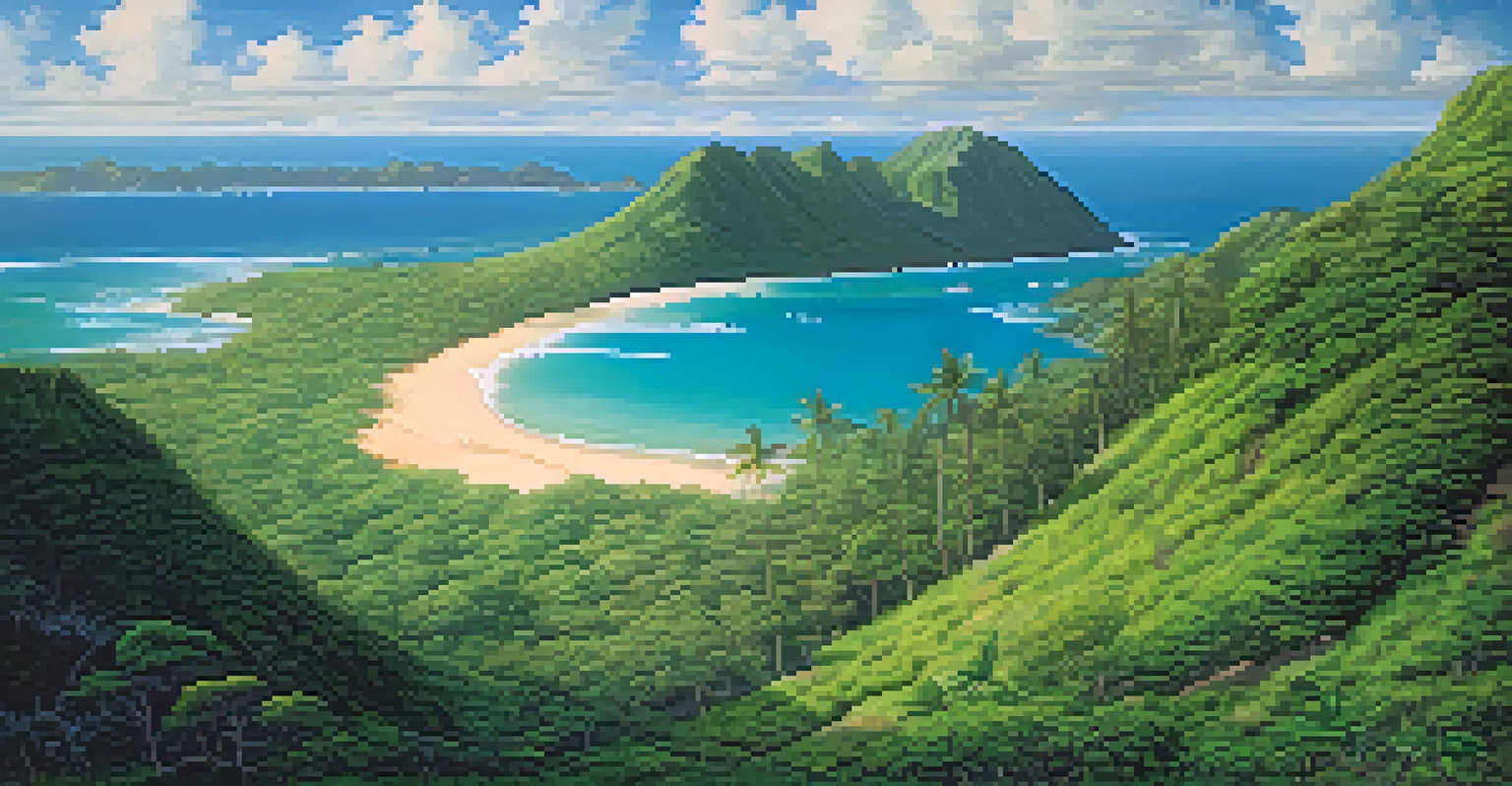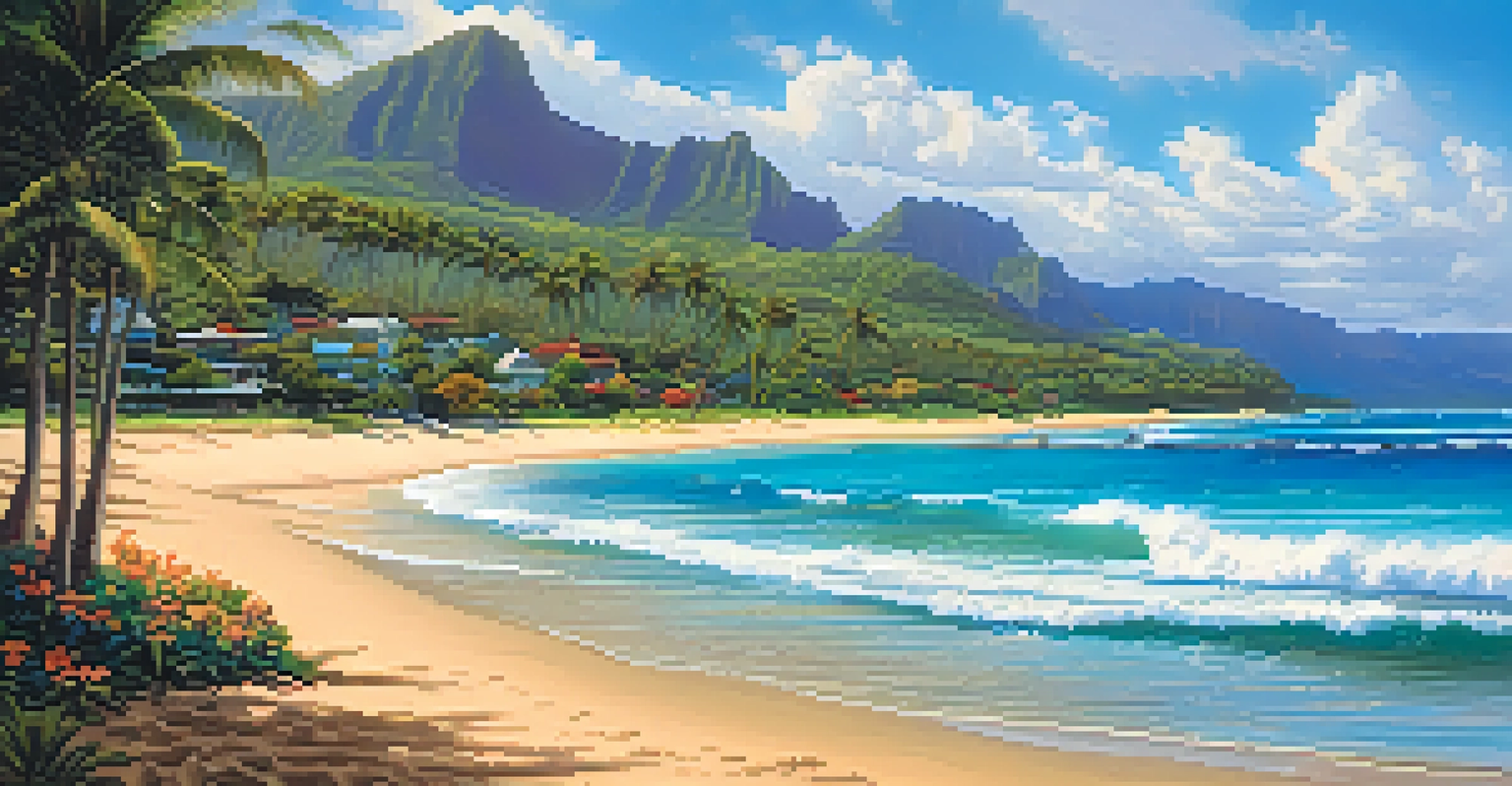Microclimates in Hawaii: Understanding Localized Weather Effects

What Are Microclimates and Why Do They Matter?
Microclimates are small, localized areas that experience different weather conditions than the surrounding regions. Think of them as tiny weather ecosystems, where factors like elevation, vegetation, and proximity to water create unique climates. In Hawaii, these variations can be quite pronounced, affecting everything from agriculture to daily life.
The greatest danger in times of turbulence is not the turbulence; it is to act with yesterday's logic.
For instance, while one part of Maui might bask in sunshine, just a few miles away, it could be pouring rain. This phenomenon is essential for farmers who rely on the specific conditions of their microclimate to grow crops like coffee or macadamia nuts. Understanding microclimates helps locals and visitors alike appreciate the diverse environments within the islands.
Moreover, microclimates contribute to Hawaii's amazing biodiversity. The unique conditions in each area allow different plant and animal species to thrive, creating vibrant ecosystems. This diversity is one of the many reasons why Hawaii is often referred to as a tropical paradise.
The Role of Elevation in Hawaii's Microclimates
Elevation plays a crucial role in shaping microclimates across the Hawaiian Islands. As you ascend a mountain, temperatures generally drop, which can lead to vastly different weather conditions compared to the coastal areas. For example, the lush rainforests on the windward side of the Big Island receive heavy rainfall, while the leeward side remains dry and arid.

This elevation difference not only affects temperature but also influences the types of vegetation that can thrive. Lower elevations might support palm trees and tropical flowers, while higher altitudes can host hardy shrubs and even alpine plants. This vertical diversity creates a stunning array of landscapes that attract nature lovers and adventurers.
Microclimates Shape Local Ecosystems
Microclimates are localized areas with distinct weather conditions that significantly impact agriculture and biodiversity in Hawaii.
Additionally, the unique weather patterns associated with elevation can impact recreational activities. Hikers might find that conditions can change rapidly, with sunny skies at the base giving way to cooler, cloudier weather at higher elevations. Being prepared for these shifts is essential for enjoying Hawaii’s majestic trails.
Trade Winds and Their Impact on Local Weather
The trade winds are a significant factor influencing Hawaii's microclimates. These steady winds blow from east to west, bringing moisture-laden air that contributes to the lush greenery of the islands. As the winds hit the mountains, they rise, cool, and release rain, which is why the windward sides of the islands are often wetter.
Nature does not hurry, yet everything is accomplished.
Conversely, the leeward sides, shielded from these winds, tend to be drier and sunnier. This pattern creates a striking contrast between regions just a few miles apart. For example, while the northeast coast of Kauai might experience frequent rain showers, the south coast could be enjoying clear skies and warm beach weather.
Understanding how trade winds affect local weather can help residents and tourists plan their activities. Whether it's a beach day or a hike in the mountains, knowing where the rain might fall can make all the difference in enjoying Hawaii's natural beauty.
Microclimates and Agricultural Practices
Hawaii's unique microclimates play a vital role in the state's agricultural practices. Farmers often select crops based on the specific conditions of their local microclimate, ensuring optimal growth and yield. For instance, the rich volcanic soil and warm temperatures in certain areas make them ideal for growing sugarcane and pineapple.
Moreover, understanding microclimates allows farmers to implement sustainable practices that adapt to their environment. They can choose the right irrigation methods and crop rotations that align with the local weather patterns, maximizing both productivity and conservation. This knowledge has been passed down through generations, showcasing a deep connection between the land and its people.
Elevation Affects Weather Patterns
The elevation across the Hawaiian Islands creates diverse climates, affecting temperature and vegetation from coastal areas to mountain tops.
As consumers, being aware of these localized farming practices can enhance our appreciation for Hawaiian products. When you enjoy a cup of locally-grown coffee or savor a tropical fruit, you’re not just indulging in flavors; you’re experiencing the unique microclimate that made those flavors possible.
Understanding Rain Shadow Effects in Hawaii
Rain shadow effects occur when moisture-laden winds are blocked by mountains, resulting in dry conditions on one side while the other side receives ample rainfall. In Hawaii, this phenomenon is vividly illustrated by the relationship between the windward and leeward sides of the islands. Areas that face the trade winds are lush and green, while those in the rain shadow can be surprisingly arid.
For instance, the Big Island showcases this effect beautifully. The windward side, such as Hilo, is one of the wettest places on Earth, while the leeward side, like Kona, enjoys a sunny, dry climate perfect for growing coffee beans. This stark contrast highlights the incredible diversity of landscapes and climates found within the islands.
Understanding rain shadow effects can help residents and visitors choose destinations based on preferred weather conditions. Whether you’re seeking a vibrant rainforest experience or a sun-soaked beach, knowing about these localized weather effects can guide your adventures in Hawaii.
The Influence of Ocean Currents on Local Climate
Ocean currents significantly influence Hawaii's weather patterns, creating a complex interplay between land and sea. The warm waters of the Pacific Ocean can raise temperatures, while cooler currents can lead to refreshing breezes and more pleasant weather. This dynamic relationship is essential for understanding Hawaii's unique microclimates.
For instance, the Kuroshio Current brings warm water from the equator, which contributes to the tropical climate of the islands. Meanwhile, currents like the California Current can introduce cooler temperatures, particularly in areas like the northern shores of the islands. These variations can affect everything from local fishing to marine biodiversity.
Trade Winds Create Weather Variability
Trade winds influence Hawaii's microclimates by bringing moisture to windward sides and creating dry conditions on leeward sides, leading to stark weather contrasts within short distances.
Being aware of how ocean currents impact local climates can enrich your experience in Hawaii. It helps you understand why certain beaches are perfect for swimming while others are ideal for surfing, giving you the knowledge to choose the right spot for your day in the sun.
Planning Your Activities Around Hawaii's Microclimates
Planning your activities in Hawaii requires an understanding of the island’s unique microclimates. Knowing where the sun shines and where the rain falls can help you enjoy everything from hiking to beach outings. A little research can go a long way in ensuring you make the most of your time in paradise.
For example, if you're heading to the Big Island, checking the weather in both Hilo and Kona can help you decide where to spend your day. If Hilo is expecting rain, you might want to explore the sunny beaches of Kona instead. This flexibility can open up opportunities for discovering hidden gems across the islands.

Ultimately, embracing the idea of microclimates can enhance your Hawaiian experience. Each region offers unique attractions and climates, so being adaptable and informed can lead you to unforgettable adventures, whether it's exploring lush waterfalls or relaxing on pristine beaches.